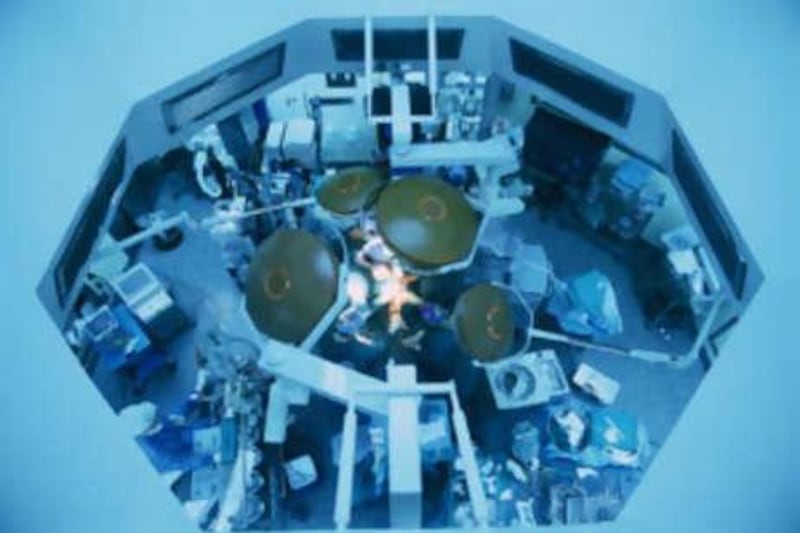Doctors are not renowned for their interest in life after death. Most prefer to focus on keeping the rest of us alive and kicking in this world for as long as possible. But now a team of medics in the US and Britain has decided to get to the bottom of bizarre experiences reported by patients brought back from the dead in hospital resuscitation units. Around one in five such patients claim to have undergone a range of experiences, from simple feelings of peace and contentment to the delight of entering a light-filled paradise. That these patients can experience anything at all is remarkable enough: according to monitoring equipment they underwent periods of zero brain activity - the very definition of death. More perplexing still, many of the patients report a specific type of near-death experience - one which hints at the need for a radical rethink of the relationship between mind and body. These patients undergo so-called out of body experiences (OBEs), in which they feel themselves leaving their bodies while remaining fully aware of their surroundings. Some report being able to look down and see the doctors desperately trying to resuscitate them - and even feeling reluctance to return when the doctors finally succeed.
Sceptics have long dismissed such reports as simply accounts of illusions generated by brains on the brink of death. Yet if the reports really can be taken at face value, the implications for our understanding of consciousness are truly mind-boggling. For it suggests that consciousness can exist independently of a living, thinking brain. Now doctors in 25 hospitals in the US and Britain plan to resolve the argument one way or the other with a simple experiment. They are going to install a series of randomly chosen images in cardiac emergency rooms, putting them in locations that can only be seen from above the operating tables. Over the next three years, they will interview every patient resuscitated by the doctors, and ask them precisely what they saw.
If there is any truth to reports of OBEs, then some of the patients should be able to see the hidden images. In total, around 1,500 patients will be included in the study, which should be enough to produce at least some positive results - if the phenomenon is genuine, that is. For until now, the evidence for the reality of OBEs has been entirely anecdotal, though no less intriguing for all that. The most celebrated case emerged in 1984, and centres on the experiences of a female migrant worker admitted to the cardiac care unit of Harborview Hospital, Seattle. After suffering a heart attack, the woman experienced an OBE, which she reported felt as if she had floated out of the resuscitation unit altogether. While surveying the scene outdoors, she claimed to see a man's dark-blue tennis shoe, scuffed on the left side, on a third-floor window-ledge. On hearing her story, the woman's social worker went in search of the shoe ? and found it. Most remarkably of all, it turned out that the scuffing could have been seen only from a vantage point outside and above the resuscitation unit window.
The "Tennis Shoe Case" has attracted much attention - not least from sceptics. Investigators led by Barry Beyerstein of Simon Fraser University, British Columbia investigated the claim and concluded the woman could have garnered the supposedly unknowable facts by other means. Even so, they conceded this did not prove that the woman's experience was illusory. For all their entertainment value, such anecdotes are rightly viewed with suspicion, as they can always be explained as being the result of coincidence, lucky guesswork or deception. The idea of carrying out a controlled scientific study of OBEs is hardly new: the first proposal was put forward in 1968. Perhaps the fear of what might be found has deterred researchers thus far. Certainly the co-ordinator of the new study, Dr Sam Parnia of Southampton University, must be hoping it is more successful than the small study of 60 patients he conducted a few years ago.
All of them had been resuscitated in a cardiac ward where various images had been suspended from the ceiling of the ward, all facing upwards. Dr Parnia and his colleagues found that seven of the 60 patients had experienced some form of near-death experience (NDE), with four recalling many of the classic sensations of joy, tranquillity and seeing a bright light. Frustratingly, however, not one of the patients recalled experiencing an OBE.
If any positive results do emerge from the current study, they are sure to receive a rough ride from sceptics, who can point to a host of medical disorders capable of creating OBEs, from migraines and epileptic seizures to full-blown psychosis. Recently scientists have also begun to find ways of triggering OBEs to order. Researchers at the US Naval Air Development Centre, Pennsylvania, have shown that pilots exposed to high G-forces experience classic symptoms of NDEs - including a sense of leaving their bodies. A team of neuroscientists led by Prof Olaf Blanke of the Ecole Polytechnique Federale in Lausanne, Switzerland, has also shown that OBEs can be triggered by electrically stimulating certain parts of the brain. The team even claims to be able to control the nature of the experience, such as the height at which subjects feel they are floating.
These studies suggest the key to OBEs lies in part of the brain called the temporal lobe, near its junction with the overlying parietal lobe. Yet they do not prove that all OBEs can be explained through conventional neuroscience. To do that requires the kind of experiment now being planned by Dr Parnia and his colleagues. And their findings may yet prove that reports of the death of the OBE mystery have been greatly exaggerated.
Robert Matthews is Visiting Reader in Science at Aston University, Birmingham, England.






